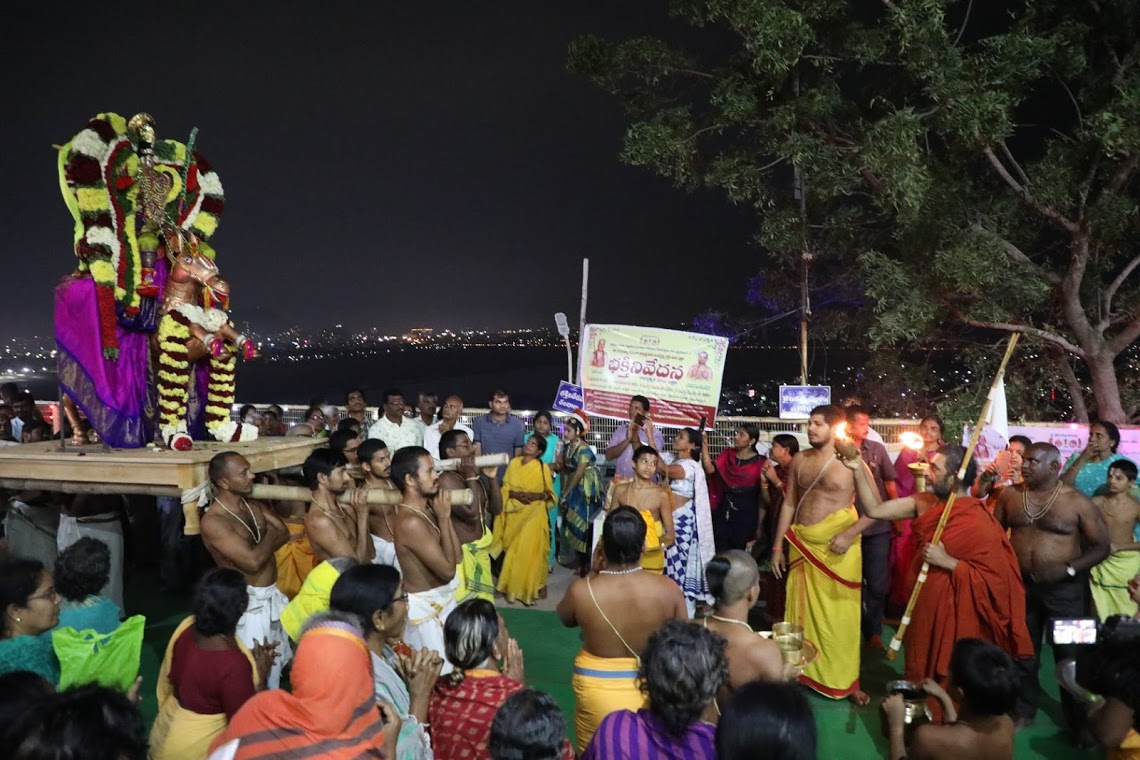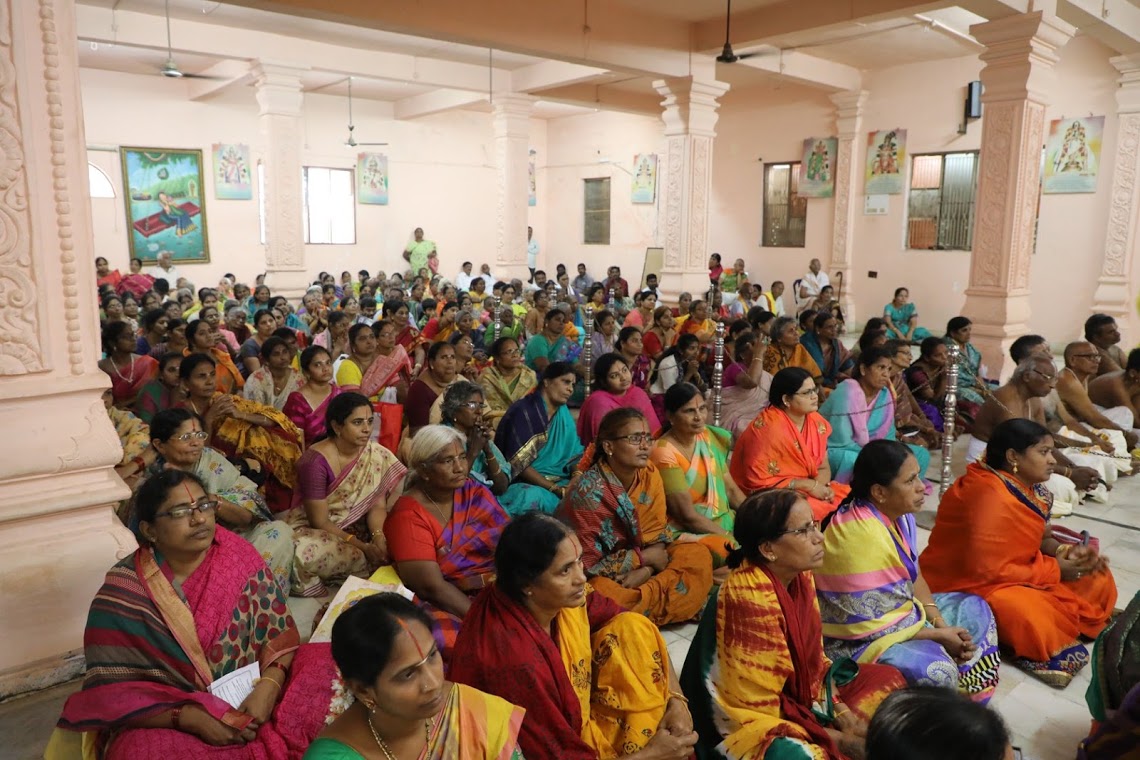The word Brahmotsavam consists of two words Brahma and Utsavam. The word Brahma has two meanings mega/highest/greatest or the four-headed Brahma. Utsavam means something that enhances joy, utsu:yate: ane:na.
Just like a new born baby opens eyes for the first time and wonders about everything around, Brahma realised his existence and wondered about where he originated from. He meditated with deep resolution to find the answer. He then experienced that God is the sole support of the lotus he was seated on. He felt the divine support from within and around him (Narayana). He also realised that God’s support for him was solely by compassion (Lakshmi). Therefore, he sought the supreme Lakshmi Narayana to help him understand the purpose of his existence.

Brahma politely asked, “Why am I here?”
God responded: “You are here to utilize the divine powers of nature for your benefit. Conduct yourself accordingly. All the instructions in this aspect are put together as Rug Veda. The know-how of all activities that you must do are outlined in Yajur Veda. Nature resonates in raga, the divine music. It is pleased when your activities are performed with a feel of love as expressed in Sama Veda. Your body must cooperate with you in this journey, the instructions to keep your body fit to serve the purpose are outlined in Attharva Veda.”
Brahma responded, “I don’t feel like working, I feel mesmerised watching you. I don’t want to leave you.”
Narayana answered, “In that case, my purpose of giving you this knowledge won’t be served. What can I do for you to help”
Brahma replied, “Stay with me always. I can then do whatever you want me to.”
Narayana answered, “I will stay with you as a Deity, archa vigraha.”
Brahma responded happily, “As long as the Deity is you, I will be happy to serve your purpose watching you in that form.”
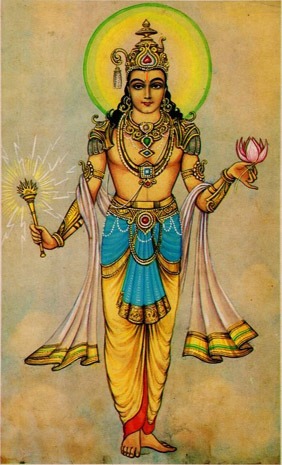
Bramha followed the manual given by God, Vedas and worked accordingly for a whole year!
Here’s an example instruction of one of his tasks…
“Vajrapaani purandaraha“, one who holds vajram (a diamond) in his hand is Indra
Above is a statement in Vedas that Brahma tasked on to create a body for Indra. Vedas contain underlying rules on how to create the vajram, a hand, a shoulder that acts as base for the hand, a body that acts as base for the shoulder, senses, manas, intellect (buddhi), body that holds everything together for Indra to carry out his purpose in existence. When Brahma finishes his task, God becomes the underlying source of energy for Indra to begin functioning.
Same process holds true for all the souls, including us all!
Each one of us gets a body that fits our purpose in this existence.
After the first year, Brahma wanted to celebrate the annual day (later called as Bramhotsavam) as he was overwhelmed with joy for serving God uninterruptedly. He sought the acceptance of God to be seated in various vehicles which represented different species that were part of the creation, indicating that God is the source of energy for every being/entity in the existence. Thus, emerged the Vahana Sevas, touring God on different types of vehicles such as Snake (wild reptile), Eagle (wild bird), Elephant (royal animal), Kalpavruksha (a tree), Sun (a self-luminous star), Moon (reflects light from Sun) etc.
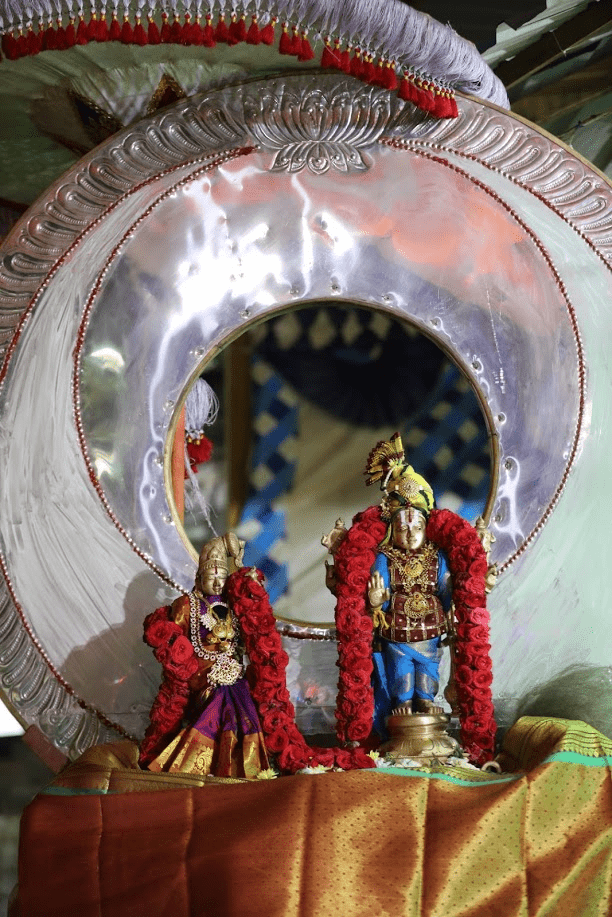


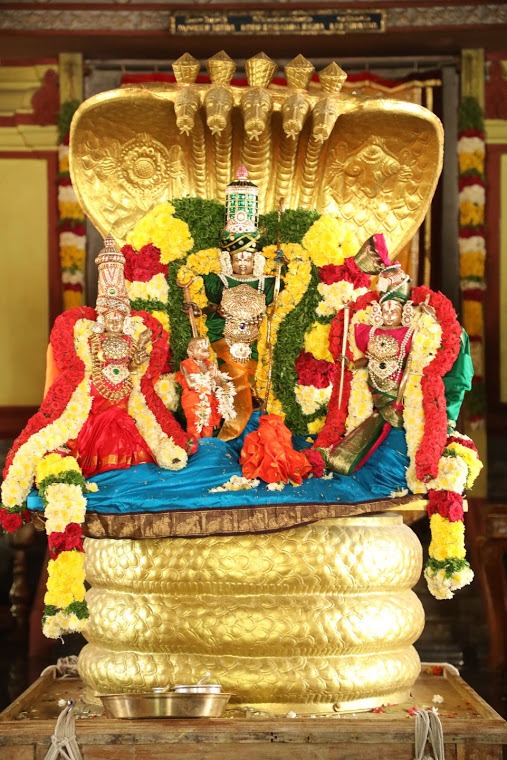
Are you wondering, “Which one of the vehicles represent a human being!?”
Chariot (rattham) represents the body of the human being. The wheels of the chariot represent punyam (virtues) and paapam (sins). The horses represent five senses. The reins represents manas (heart). Charioteer represents buddhi (intellect). You are the temporary owner of the chariot. God represents the source of energy to the chariot and yourself.
Sodhvanah paamaatnowthi thad vishno:h paramam padam
If one understands and takes care of all the parts of the chariot and puts it the right direction, then the destination will be parama padam, the best one. Otherwise, one would traverse aimlessly, or fall into a dangerous pit, a water body, or a land full of thorns hurting the body and the self immensely!
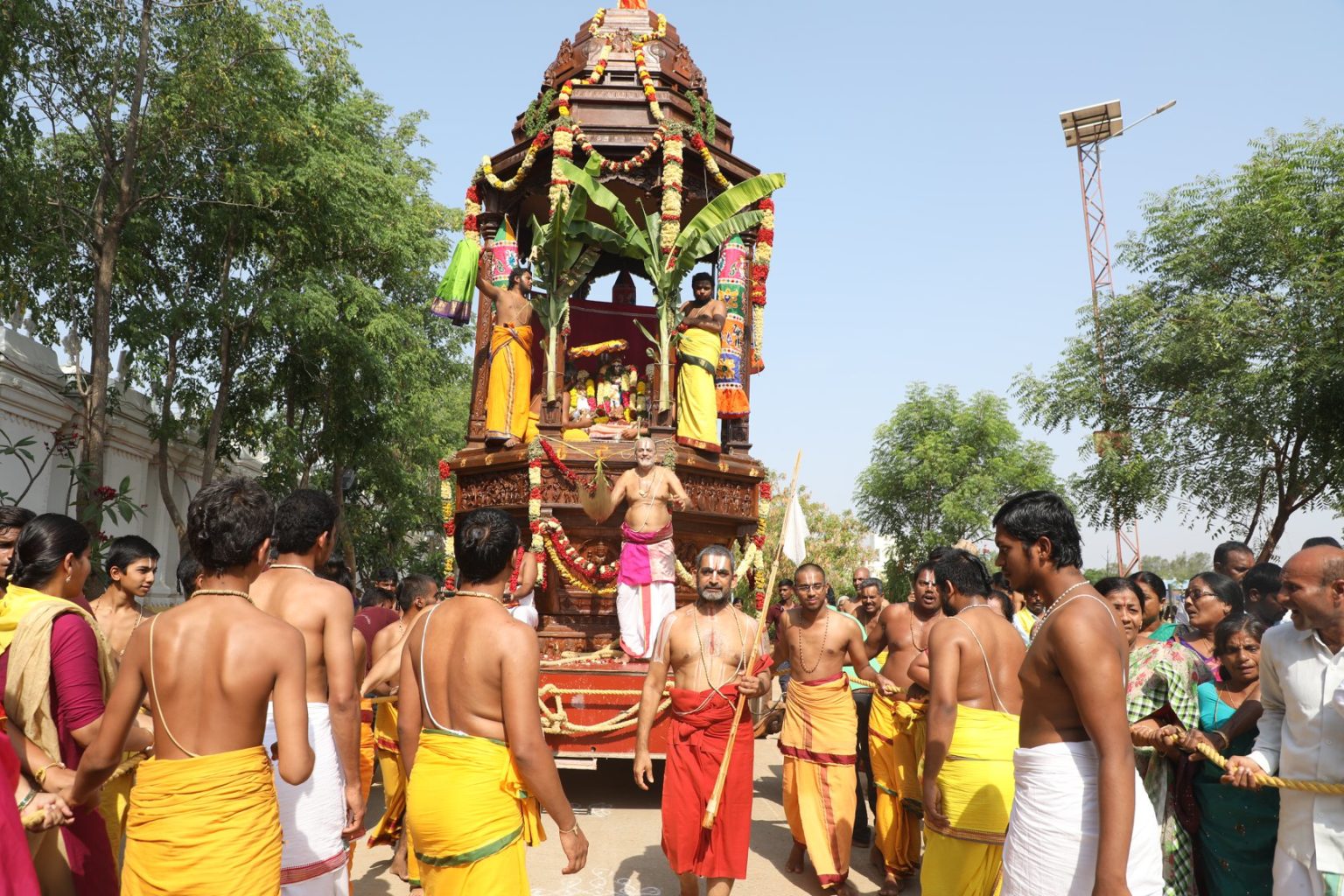
Brahma celebrated Rathotsavam (God toured in a chartiot). It was then followed by all the devotees taking a divine dip (chakra snanam) in water along with God. This is followed by Sri Pushpa Yagam (joyous offering of various flowers signifying our hearts) , Dwadasa Aaradhana (12+1 fold service indicating 1 service for each month of the year plus one to seek forgiveness), Uthsavanthara Snapana (soothing concluding shower/bath), concluding ceremonies where all the attendees were honoured.
Since then, Bramhotsavams are celebrated in the same manner as Brahma did in every temple. The intention is to give an experience of the wisdom and jubilant joy that Brahma felt out of sheer gratitude and love for God. The event signifying such joy of realisation is called Bramhotsavam (the greatest celebration).
Joy shared is multiplied, Sorrow shared is divided!
Notice the word ‘shared’ in both the phrases. Unless we share the experience with likeminded people, the joy isn’t fully experienceable. This applies to sorrow as well. When sorrow is shared, then you become fully alleviated from the pain. That is why, Brahma invited all the devathas and everyone when he originally celebrated it. And therefore, all the temples are till date filled with devotees during Brahmotsavams.
Snigdha jana samvibhaktham hi dukham sahya vedanam bhavati
– From the discourse of Sri Chinna Jeeyar Swamiji
– 3 rd Feb 2020, Vijaya Kiladri Sri Srinivas Kshetram
– 3 rd Bramhotsavam, Vijawayda, AP
